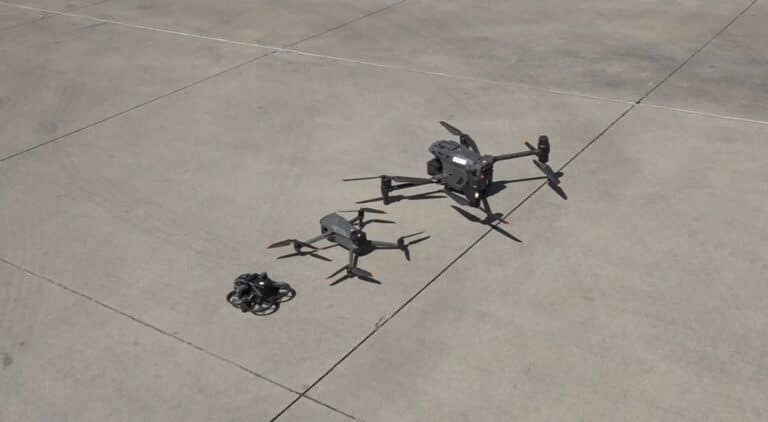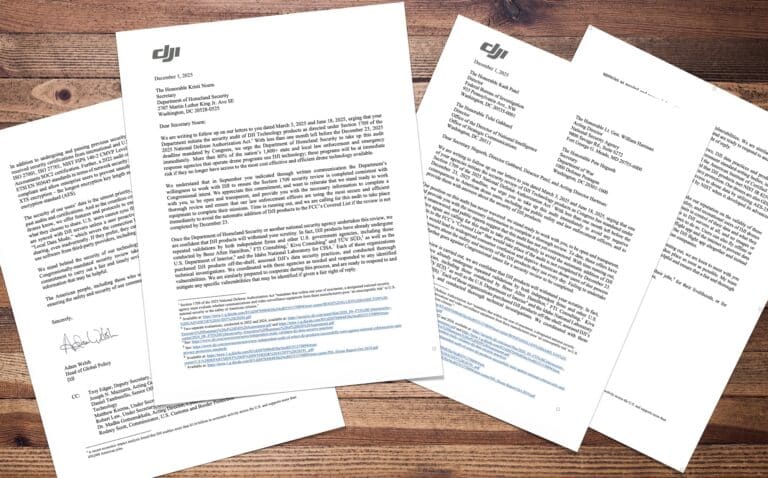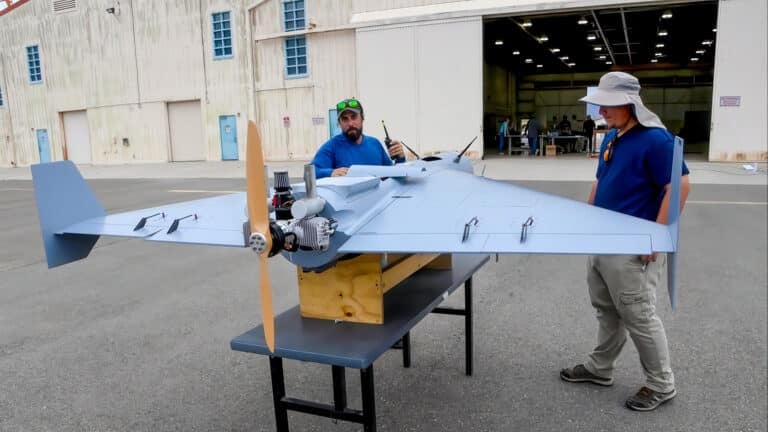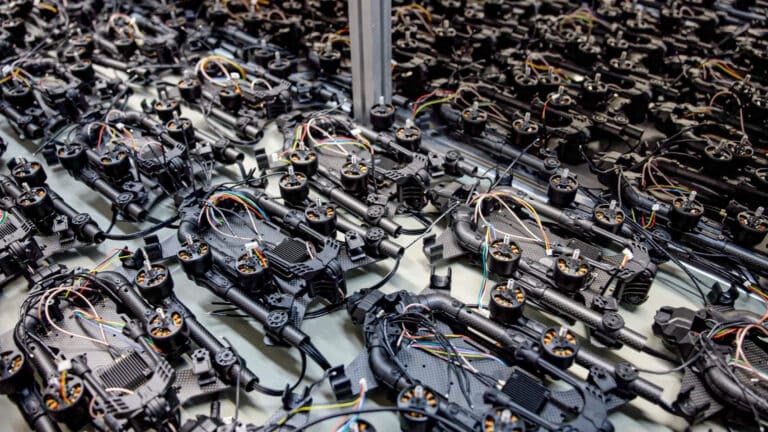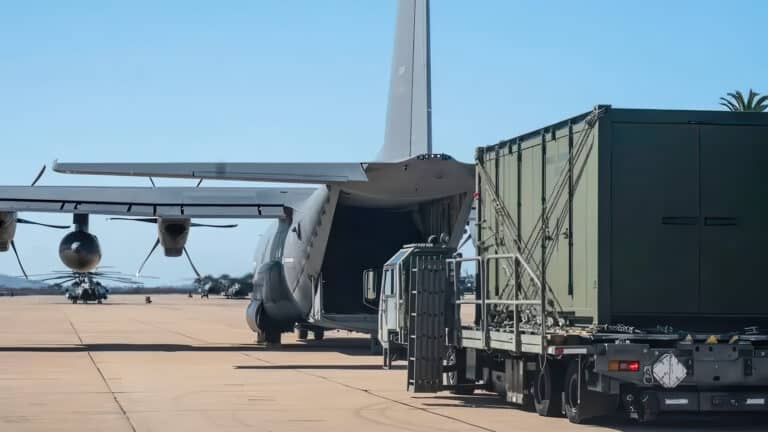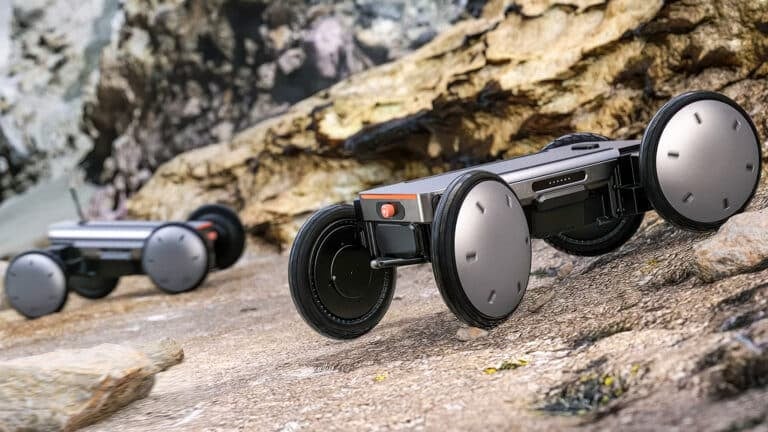German Engineer Builds Flying Star Wars X-Wing Drone That Hits 152 MPH
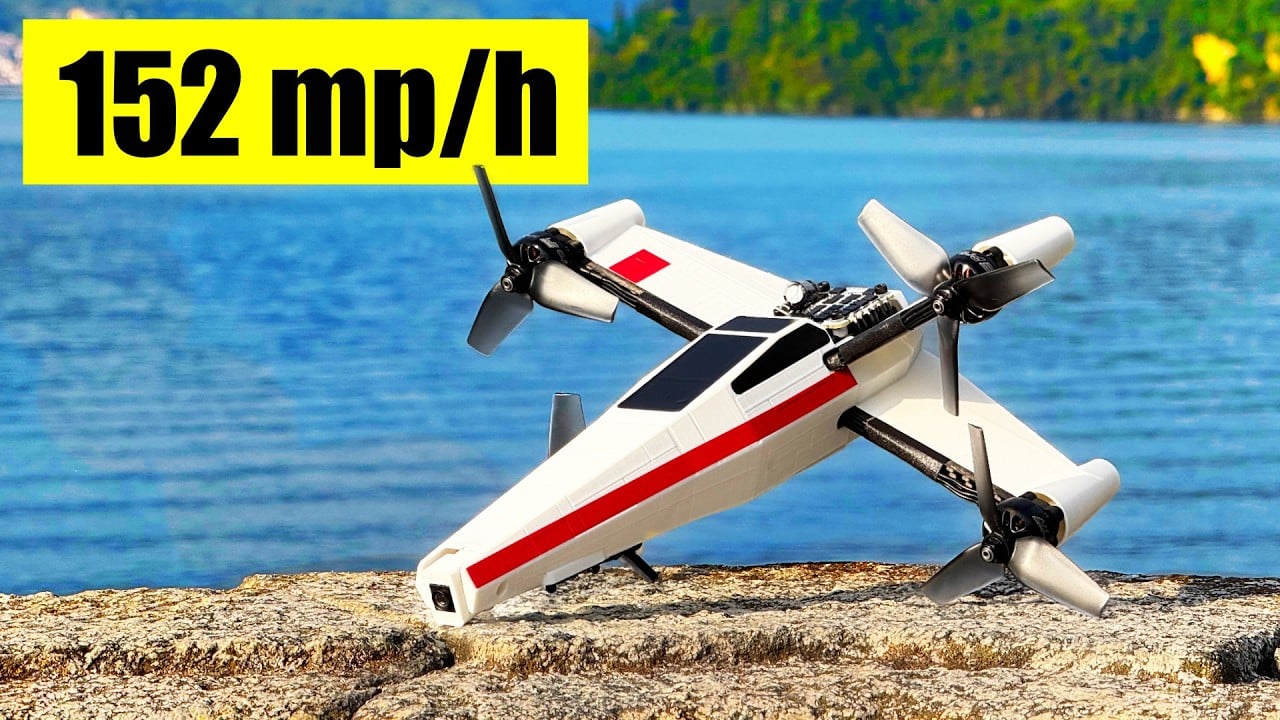
Amazon Drone Deals: DJI Mini 5 Pro Fly More Combo with DJI RC2 now for $1,099!
A German drone enthusiast has achieved what many thought impossible: building a fully functional Star Wars X-wing replica drone that reaches speeds over 200 km/h (124 mph), with the builder claiming a top speed of 152 mph. After multiple failed prototypes and countless crashes, the creator finally solved the engineering challenges that have stumped previous builders attempting to make the iconic starfighter’s distinctive shape actually fly.
The achievement represents more than just impressive craftsmanship. This project could establish a new category of long-range FPV drones that prioritize dramatic aesthetics without sacrificing performance, proving that Hollywood’s most recognizable spacecraft designs can translate into real-world flying machines.
Breaking the X-Wing Curse
The X-wing’s distinctive shape has long been considered aerodynamically impractical. Previous YouTube builders discovered that the four-winged design creates significant stability issues when trying to achieve high speeds. But the German engineer, whose YouTube channel documents the entire build process, found inspiration in an unlikely source.
Red Bull’s record-breaking FPV drone, which reached 310 km/h (193 mph) while filming Formula 1 cars earlier this year, provided the key insight. That project, created by Dutch Drone Gods for Red Bull Racing, used a rocket-like form factor that prioritized straight-line speed through clever motor placement.
“That gave me the idea to use a similar concept for this project,” the creator explained in his video, describing his decision to place motors at the wingtips rather than using scale-accurate impeller engines.
Four Crashes and a Breakthrough
The path to success involved destroying multiple prototypes. The first carbon fiber version suffered catastrophic vibrations during initial testing, with the frame flexing so severely that the flight controller shut itself down mid-flight. “The vibration problem has a very specific cause and it’s because the frame is not stiff enough,” the builder noted.
His solution involved aggressive PID tuning to dampen the flight controller’s reaction speed, essentially teaching the electronics to ignore minor frame movements. But even this fix proved inadequate when he attempted high-speed runs. During one test flight, vibrations became so violent the drone fell from the sky.
The breakthrough came with a complete redesign using 3D printing technology. Working with a Bambu Lab printer capable of producing both detailed cosmetic parts and structural carbon fiber-reinforced components, the engineer created multiple versions. A fully 3D-printed PLA plastic frame initially showed promise but still exhibited dangerous instability. The final successful iteration combined 3D-printed body panels with properly-oriented carbon fiber arms to achieve the necessary rigidity.
Technical Innovation Meets Star Wars Aesthetic
The final X-wing measures approximately 2 feet (610mm) across and uses four standard FPV motors positioned at the wingtips. This configuration generates enough thrust to push the craft past 200 km/h, with GPS data confirming speeds well into triple digits and the creator’s video claiming a peak of 152 mph (245 km/h).
The build incorporates several clever engineering solutions. A tilting camera mechanism allows the pilot to see forward during takeoff and landing, while a spring-loaded battery compartment in the fuselage enables quick battery swaps between flights. The flight controller sits protected in the rear, with the electronic speed controller (ESC) mounted where R2-D2 would normally ride, taking advantage of cooling airflow.
GPS integration tracks real-time speed data, while blackbox logging capability records all flight parameters for post-crash analysis. The drone uses standard FPV flight controller technology, operating in angle mode where the aircraft holds its orientation rather than position, allowing for airplane-like forward flight at extreme angles.
Cinematic Finale at Lake Como
For the project’s crowning achievement, the builder traveled to Lake Como in northern Italy, the real-world filming location that doubled as planet Naboo in the Star Wars prequels. The dramatic mountain-and-water scenery provided the perfect backdrop for high-speed FPV footage that genuinely looks like scenes from the films.
The final test flights demonstrated the X-wing’s capabilities, with smooth passes over the water at full throttle and stable handling during aggressive maneuvers. After multiple prototype failures and two destroyed flight controllers, the project vindicated the builder’s persistence.
Open-Source Blueprints Available Now
Unlike commercial products, this X-wing exists as an open-source project. The creator has released all 3D printing files on Makerworld and Printables, allowing other drone enthusiasts to build their own. The video description includes affiliate links for all electronic components, making it possible for experienced FPV pilots to replicate the build.
The total cost remains undisclosed, but the creator notes he finances his projects through affiliate commissions rather than sponsors, keeping the designs freely available to the community.
DroneXL’s Take
This project represents something we love seeing in the drone community: someone refusing to accept “that’s impossible” as an answer. The engineering journey from multiple catastrophic failures to a starfighter capable of 152 mph demonstrates the rapid innovation happening in the FPV space.
What makes this particularly noteworthy is how it builds on the Red Bull Racing drone project we covered earlier this year. That collaboration between Dutch Drone Gods and Red Bull pushed FPV technology to film Formula 1 cars at 310 km/h (193 mph). Now we’re seeing those innovations trickle down to individual builders who are applying similar principles to passion projects.
The 3D printing aspect deserves special attention. Modern printers like the Bambu Lab units used here have become powerful enough to produce structural drone components, not just cosmetic shells. Combined with carbon fiber-reinforced filaments and proper design, these machines are enabling custom builds that would have required professional fabrication shops just a few years ago.
This opens questions about where hobby drone building goes next. If someone can make an X-wing fly at 152 mph, what other “impossible” designs become feasible? We’re likely to see more builders attempting unconventional form factors now that the proof of concept exists.
What do you think? Share your thoughts in the comments below.
Discover more from DroneXL.co
Subscribe to get the latest posts sent to your email.
Check out our Classic Line of T-Shirts, Polos, Hoodies and more in our new store today!

MAKE YOUR VOICE HEARD
Proposed legislation threatens your ability to use drones for fun, work, and safety. The Drone Advocacy Alliance is fighting to ensure your voice is heard in these critical policy discussions.Join us and tell your elected officials to protect your right to fly.
Get your Part 107 Certificate
Pass the Part 107 test and take to the skies with the Pilot Institute. We have helped thousands of people become airplane and commercial drone pilots. Our courses are designed by industry experts to help you pass FAA tests and achieve your dreams.

Copyright © DroneXL.co 2025. All rights reserved. The content, images, and intellectual property on this website are protected by copyright law. Reproduction or distribution of any material without prior written permission from DroneXL.co is strictly prohibited. For permissions and inquiries, please contact us first. DroneXL.co is a proud partner of the Drone Advocacy Alliance. Be sure to check out DroneXL's sister site, EVXL.co, for all the latest news on electric vehicles.
FTC: DroneXL.co is an Amazon Associate and uses affiliate links that can generate income from qualifying purchases. We do not sell, share, rent out, or spam your email.





